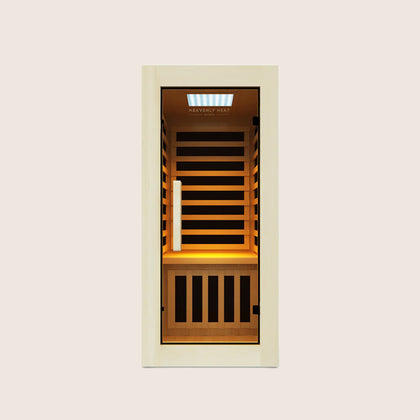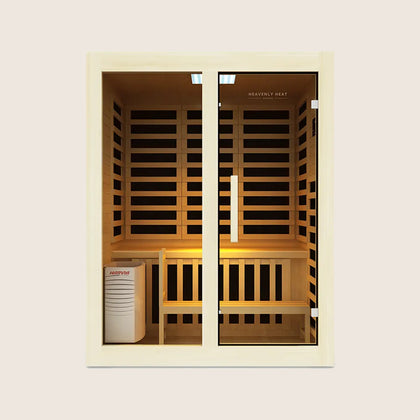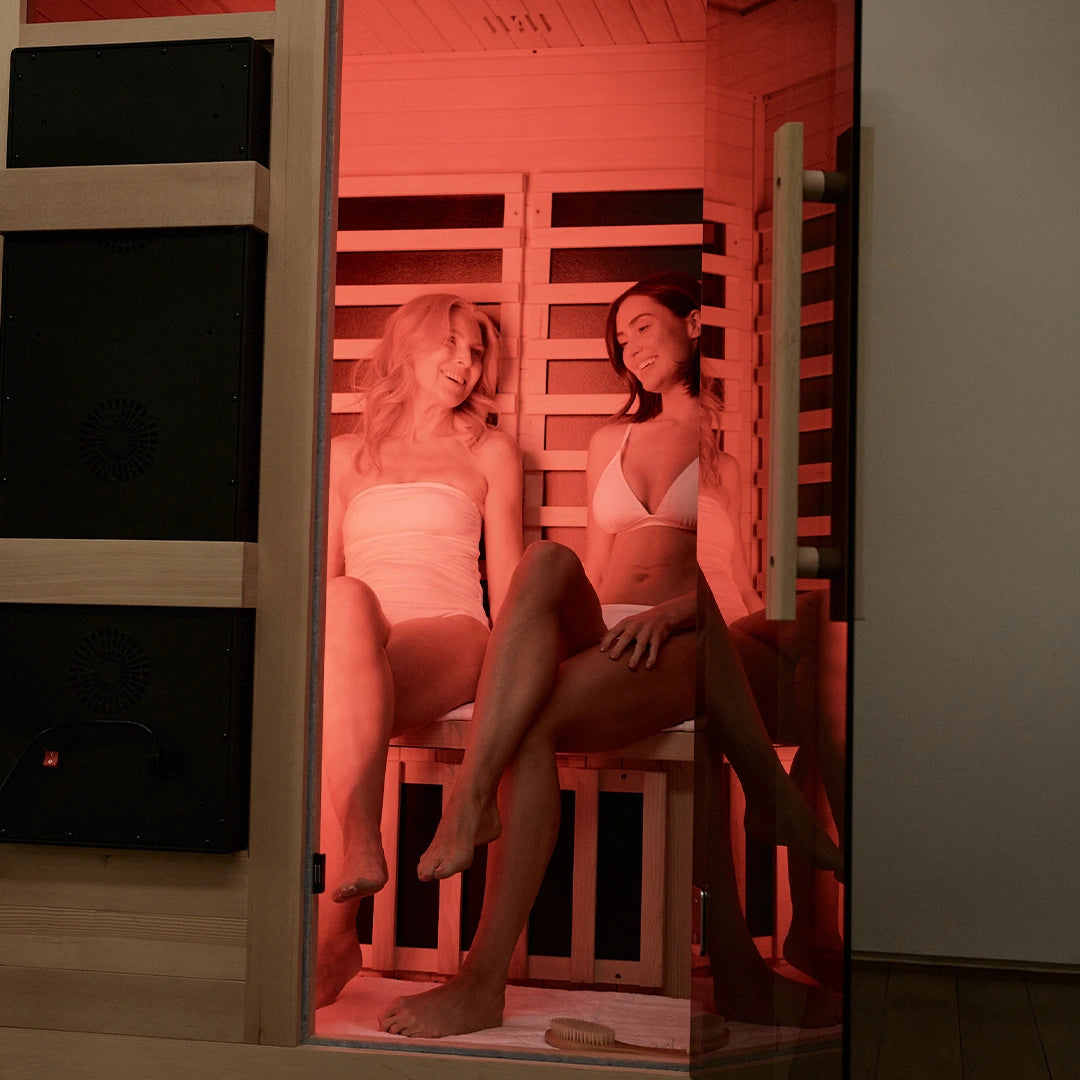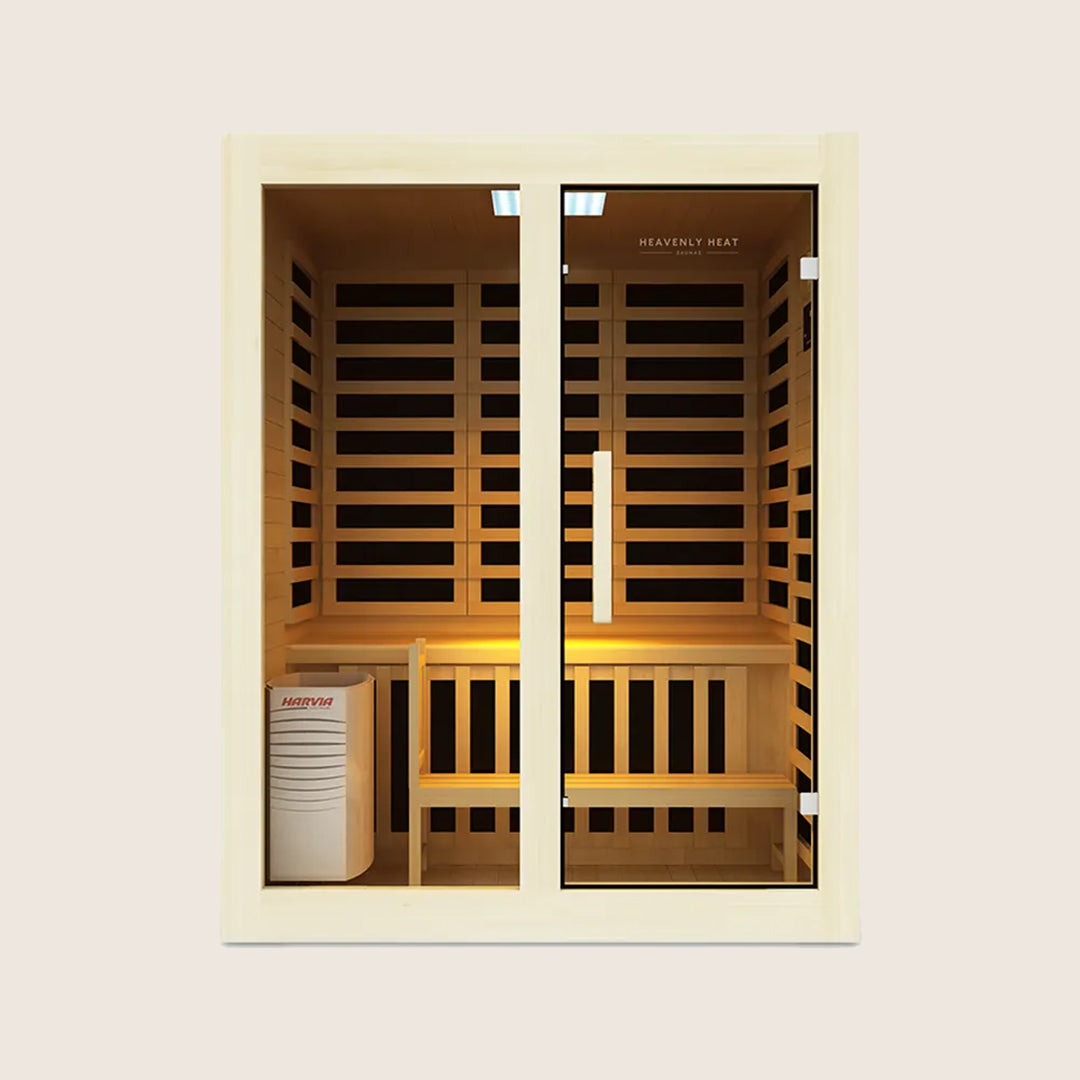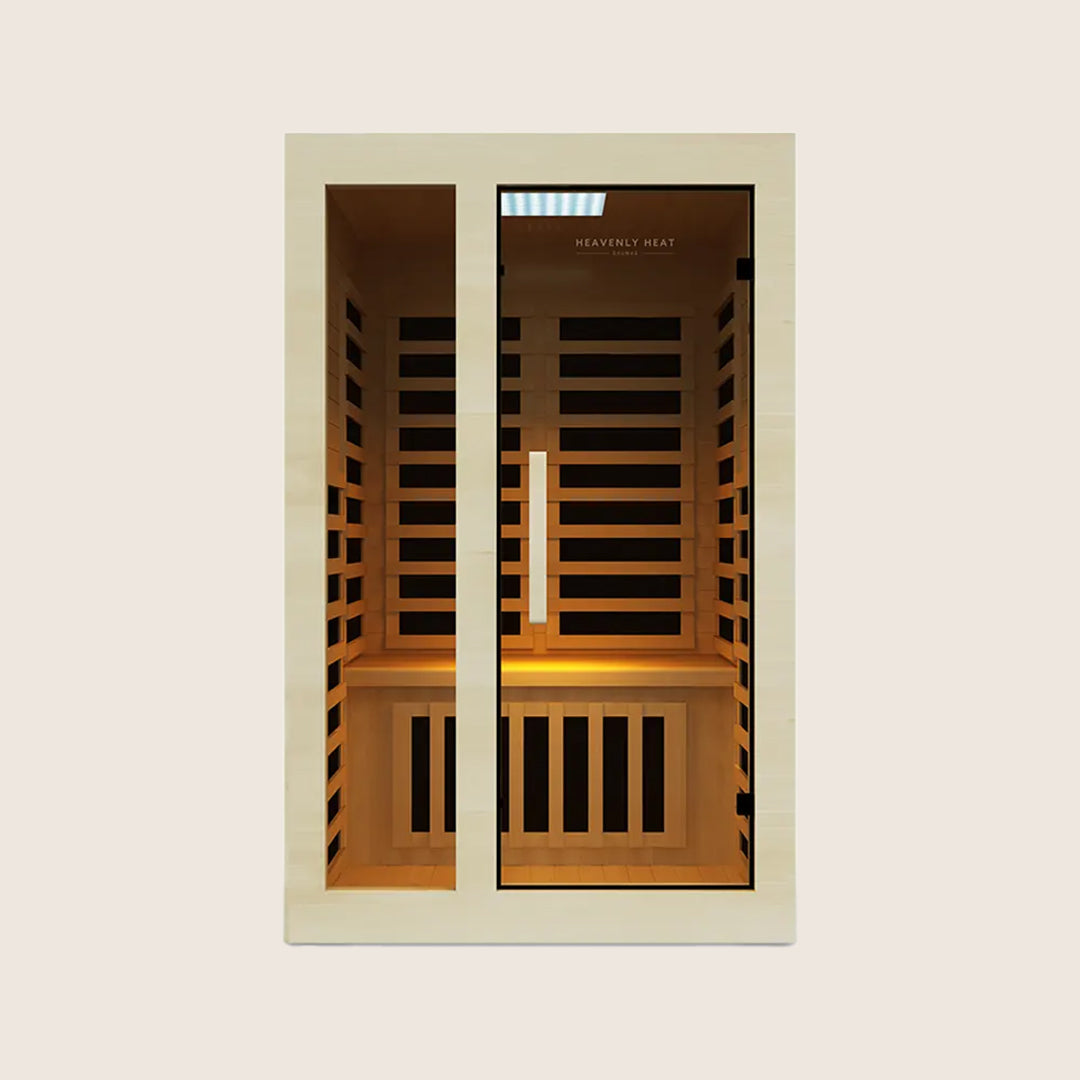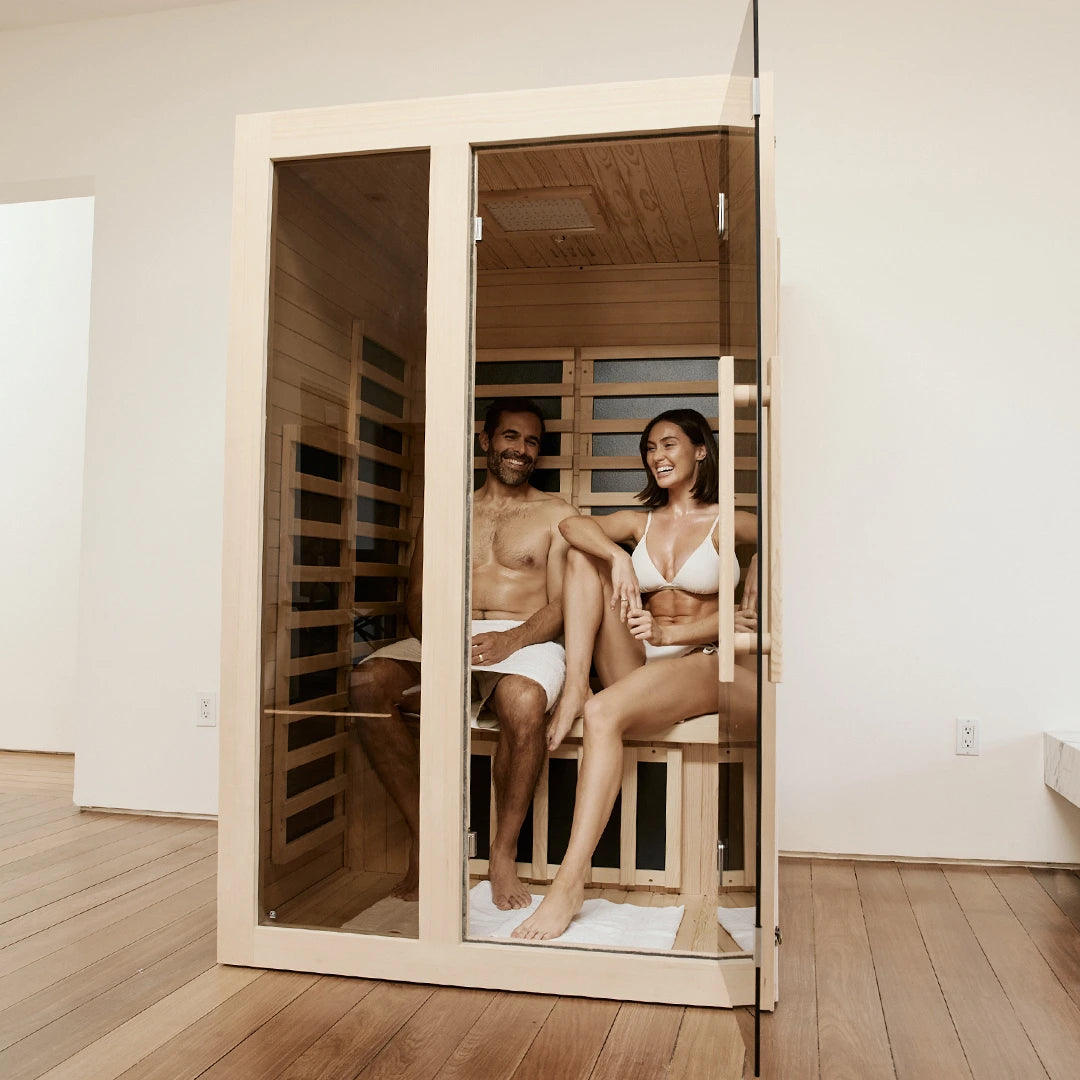Red Light Therapy for Sun Damage: Can It Reverse Aging?

Wrinkles, brown spots, blotchy skin, and those stubborn red veins aren’t just signs of aging, they’re proof of sun damage you might be overlooking.
Ignoring UV harm can accelerate aging, damage collagen, and make skin harder to repair over time.
But what if there was a gentle, non-invasive therapy that could help reverse this damage? Red light therapy might be the answer.
Key Takeaways
Understand Sun Damage: UV exposure breaks down collagen and elastin, causing wrinkles, dark spots, and uneven skin.
Red Light Therapy Rejuvenates Skin: It boosts collagen, improves elasticity, and helps fade sunspots and fine lines.
Use Topical Treatments Wisely: Antioxidants and retinoids support healing, reduce pigmentation, and smooth texture.
Consider Professional Procedures: Lasers, chemical peels, and microneedling can target deep damage and restore skin tone.
Protect Your Skin Daily: Broad-spectrum sunscreen and sun-safe habits prevent further aging and maintain results.
What Is Sun Damage?
Sun damage refers to the harm caused to the skin after prolonged or unprotected exposure to ultraviolet (UV) radiation, often showing up as sunburn, premature wrinkles, dark spots, or uneven skin texture.
Over time, these changes can progress to more serious issues like weakened skin elasticity or even an increased risk of skin cancer.
Triggers include spending long hours outdoors without sunscreen, using tanning beds, or living in environments with strong sun exposure.
At its core, sun damage occurs when UV rays penetrate the skin and disrupt DNA in skin cells, leading to cellular mutations and the breakdown of collagen and elastin, which are essential for healthy, youthful skin.
Red light therapy benefits for sun damaged skin
Boosts Collagen to Smooth Wrinkles
Collagen keeps your skin firm, smooth, and youthful. Red light therapy wakes up your skin cells and tells them to make more collagen, helping wrinkles fade and skin bounce back.
A study in Photomedicine and Laser Surgery treated 136 people with red light and found their skin felt smoother, looked brighter, and had more collagen.
Fades Dark Spots and Sunspots
Red light therapy has gained attention for its potential to improve sun-damaged skin, particularly in fading dark spots and sunspots.
Clinical studies, including a 2023 trial, found that red light at 633 nm helped reduce pigmentation in patients with melasma over several weeks, while also enhancing skin texture and tone without side effects.
Research published in the Journal of Clinical Medicine highlights that red light (630–660 nm) may inhibit melanin production, downregulating key pigmentation pathways and even reducing melanocyte activity, which contributes to lighter, more even skin.
Before-and-after imaging studies further support these benefits, showing improvements in skin texture, roughness, and elasticity through increased collagen and elastin production.
Patients also report a brighter, smoother complexion, along with reduced fine lines. While results for hyperpigmentation like sunspots can vary, consistent use of red light therapy appears promising for managing sun damage.
Ongoing research aims to refine treatment protocols and determine the long-term effects, ensuring optimal results for different skin types.
Reduces Fine Lines from Sun Exposure
Red light therapy fights fine lines caused by sun damage by waking up your skin cells to make more collagen, which keeps your skin firm and smooth.
It also reduces the stress that makes wrinkles worse. In one study with 136 people, red light improved skin texture and boosted collagen.
Another study with 20 women showed regular LED red light sessions softened wrinkles and made skin firmer over three months. Red light helps your skin repair itself and look younger, even after sun exposure.
Speeds Up Skin Healing and Renewal
Red light therapy (RLT) is gaining attention for its ability to help repair sun-damaged skin. Scientific studies show that low-wavelength red and near-infrared light penetrates deep into the skin, stimulating cellular activity, boosting collagen and elastin production, and improving blood circulation.
These effects accelerate tissue repair, reduce inflammation, and promote a more even skin tone, helping diminish redness, fine lines, and hyperpigmentation caused by UV damage.
Clinical trials confirm faster recovery for sunburned or photoaged skin compared to untreated areas, with noticeable improvements in texture, firmness, and overall complexion.
Dermatologists also use objective measurements, like collagen density scans, skin elasticity tests, and high-resolution imaging, alongside patient feedback to assess the therapy’s effectiveness.
Whether used at home with FDA-cleared devices or in clinical settings, consistency is key, with short sessions a few times per week offering visible results.
Overall, RLT offers a safe, non-invasive way to rejuvenate sun-damaged skin and support long-term skin health.
Improves Skin Texture and Firmness
Red light therapy improves sun-damaged skin by stimulating collagen production, smoothing rough texture, reducing enlarged pores, and firming sagging areas.
It boosts circulation, repairs damaged cells, and gradually restores elasticity, leaving skin smoother and more youthful with consistent use.
Topical and Professional Treatments for Sun-Damaged Skin
Antioxidant Creams Repair Skin and Prevent Further Damage
Antioxidant creams, enriched with ingredients like vitamins C, E, and niacinamide, play a crucial role in repairing sun-damaged skin.
As noted in the Journal of Cosmetics, vitamin C neutralizes harmful free radicals from UV exposure, supports other antioxidants like vitamin E, and even helps reduce pigmentation by inhibiting tyrosinase activity.
Vitamin E, a lipid-soluble antioxidant, protects cell membranes and diminishes UV-induced redness and swelling, while vitamin K helps manage bruising and vascular aging.
Clinical studies reported in the CME Journal of Geriatric Medicine show that antioxidant creams can improve skin tone by 18% and reduce oxidative stress markers by 19%, complementing benefits like wrinkle reduction and enhanced elasticity from other active ingredients.
Moreover, research highlighted in the Journal of Investigative Dermatology Symposium Proceedings indicates that combining antioxidants with broad-spectrum sunscreen enhances protection against UV-induced damage, DNA stress, and premature aging, making them a valuable addition to daily skincare routines.
Retinoids Promote Cell Turnover to Smooth and Renew Skin
Retinoids, derivatives of vitamin A, are widely recognized for their ability to rejuvenate sun-damaged skin.
As highlighted in Advances in Dermatology and Allergology, these compounds stimulate skin cell turnover, enhance keratinocyte proliferation, and strengthen the skin’s protective barrier while reducing water loss.
They also support collagen production and inhibit enzymes that break down collagen, which helps smooth fine lines and improve elasticity.
Research in Clinical Interventions in Aging shows that tretinoin, one of the most studied retinoids, can visibly reduce wrinkles and uneven pigmentation, but significant dermal improvements usually require consistent use for six to twelve months.
Topical retinol offers similar benefits with fewer side effects, increasing collagen types I and III and partially restoring the skin’s microfibrillar network.
With regular application, retinoids not only diminish sun-induced discoloration and coarse texture but also enhance angiogenesis and skin resilience, making them one of the most effective anti-aging treatments for photoaged skin.
Chemical Peels Remove Damaged Layers for Even Skin Tone
Chemical peels remove damaged outer skin layers, smoothing texture, reducing fine lines, and improving uneven pigmentation.
Regular treatments can reverse signs of sun damage and restore a clearer, brighter, more even complexion.

Laser Treatments Target Deep Damage and Reduce Discoloration
Laser treatments have emerged as a highly effective solution for repairing sun-damaged skin, offering precision that surpasses other professional procedures like chemical peels or microneedling.
Research highlighted in the Journal of Cosmetic Dermatology shows that fractional, ablative, and non-ablative lasers can target deep tissue damage, stimulate collagen production, and improve skin texture with minimal downtime.
A study in Clinical, Cosmetic and Investigational Dermatology found that nearly all patients, over 95%, reported noticeable improvements in pores, wrinkles, and overall skin tone after near-infrared laser treatment, with long-lasting elastin stimulation.
Meanwhile, the Journal of Clinical and Medicine emphasizes that sequential laser therapies are particularly effective for pigmentary concerns in darker skin tones, though conditions like melasma may require ongoing maintenance due to higher recurrence rates.
Compared with chemical peels and microneedling, lasers can tackle deeper discoloration more efficiently, though cost and the risk of pigment changes should be considered.
Overall, lasers provide a customizable, scientifically backed approach for rejuvenating sun-damaged skin safely and effectively.
Microneedling Stimulates Collagen for Firmer, Healthier Skin
Microneedling creates tiny, controlled micro-injuries in the skin, triggering collagen production.
This helps repair sun-damaged skin, improves firmness and elasticity, reduces sagging, smooths fine lines, and enhances overall texture. Collagen stimulation continues for weeks, gradually revealing firmer, revitalized skin.
Consistent Sun Protection Prevents Future Damage and Aging
Regular sun protection is one of the most effective ways to keep skin looking youthful. Research from the Annals of Internal Medicine shows that adults who applied broad-spectrum sunscreen daily experienced 24% less skin aging over 4.5 years, with smoother, more resilient skin and fewer wrinkles compared to those who used sunscreen sporadically.
UVA and UVB rays accelerate the breakdown of collagen and elastin, the fibers that give skin its firmness and elasticity.
As highlighted by Cureus, chronic UV exposure not only causes wrinkles and sagging but also increases DNA damage, raising the risk of skin cancer.
Broad-spectrum SPF 30 or higher sunscreen blocks about 97% of UVB rays, shielding skin from both sunburn and long-term damage.
While no sunscreen provides total protection, combining it with hats, clothing, and shade can dramatically reduce photoaging.
Incorporating sunscreen into your daily routine protects collagen, preserves elasticity, and keeps your skin healthier and more youthful over time.
FAQs
Does red light therapy work for sun spots?
Red light therapy can help reduce sun spots by stimulating skin healing, boosting collagen, improving circulation, and reducing inflammation. Studies show up to 80% improvement after 12 treatments. While generally safe, results vary, requiring multiple sessions; mild redness may occur. Consult a dermatologist for suitability.
Is red light therapy safe for all skin types?
Red light therapy is generally safe for most skin types, but individuals with darker skin may face higher risks like hyperpigmentation. Safety depends on skin tone, medical conditions, medications, and pregnancy. Always consult a dermatologist, use FDA-cleared devices, follow instructions, and monitor for potential side effects. (45 words)
Can red light therapy help heal sunburns?
Yes, red light therapy may help heal sunburns by reducing inflammation, soothing redness, and speeding up skin repair. Studies show it stimulates collagen and elastin production, improves circulation, and enhances cell regeneration, which supports recovery from UV damage. While not a replacement for sunscreen, consistent use can ease discomfort, promote healing, and protect long-term skin health safely.
Should I wear eye protection during red light therapy?
It’s natural to wonder if red light therapy can harm your eyes. Research shows that FDA-cleared at-home LED devices are generally safe when used as directed, with non-UV, non-laser light far below levels that could damage the retina. Most devices even come with protective goggles, which you should wear for extra safety, especially if you have existing eye conditions or light sensitivity. While clinical-strength treatments may require strict eye protection, typical at-home devices are designed to minimize risk. However, prolonged exposure, high intensity, or improper use can cause eye strain, phototoxicity, or temporary blurred vision. Using the correct wavelength (around 630–680 nm) and following device instructions helps ensure safety while still providing therapeutic benefits. For peace of mind, wearing goggles, keeping your eyes closed if needed, and consulting your optometrist are simple steps to protect your vision during red light therapy.
Are there any medical conditions or medications that make red light therapy unsafe?
Red light therapy (RLT) is generally considered safe, but certain medical conditions and medications can make it risky. People with photosensitive disorders, such as lupus or cutaneous porphyrias, may experience worsening symptoms or painful skin reactions, as studies have shown visible light can trigger lesions in these patients. Clinics in Dermatology notes that phototherapy, while beneficial, can sometimes cause skin redness, itching, blistering, or even long-term effects like pigmentation changes or photoaging, especially in individuals on photosensitizing medications like lithium, some antibiotics, or antipsychotics. Those with active cancer, open wounds, recent burns, or eye conditions should avoid RLT or proceed only under medical supervision. Experts recommend consulting a healthcare provider, performing patch tests, and following FDA-cleared device instructions. Clinical trials also emphasize exclusion for patients with epilepsy, diabetes-related wounds, or thyroid issues to ensure safety. While RLT can support skin healing and wellness, careful evaluation of personal health and professional guidance are key to preventing adverse reactions.


